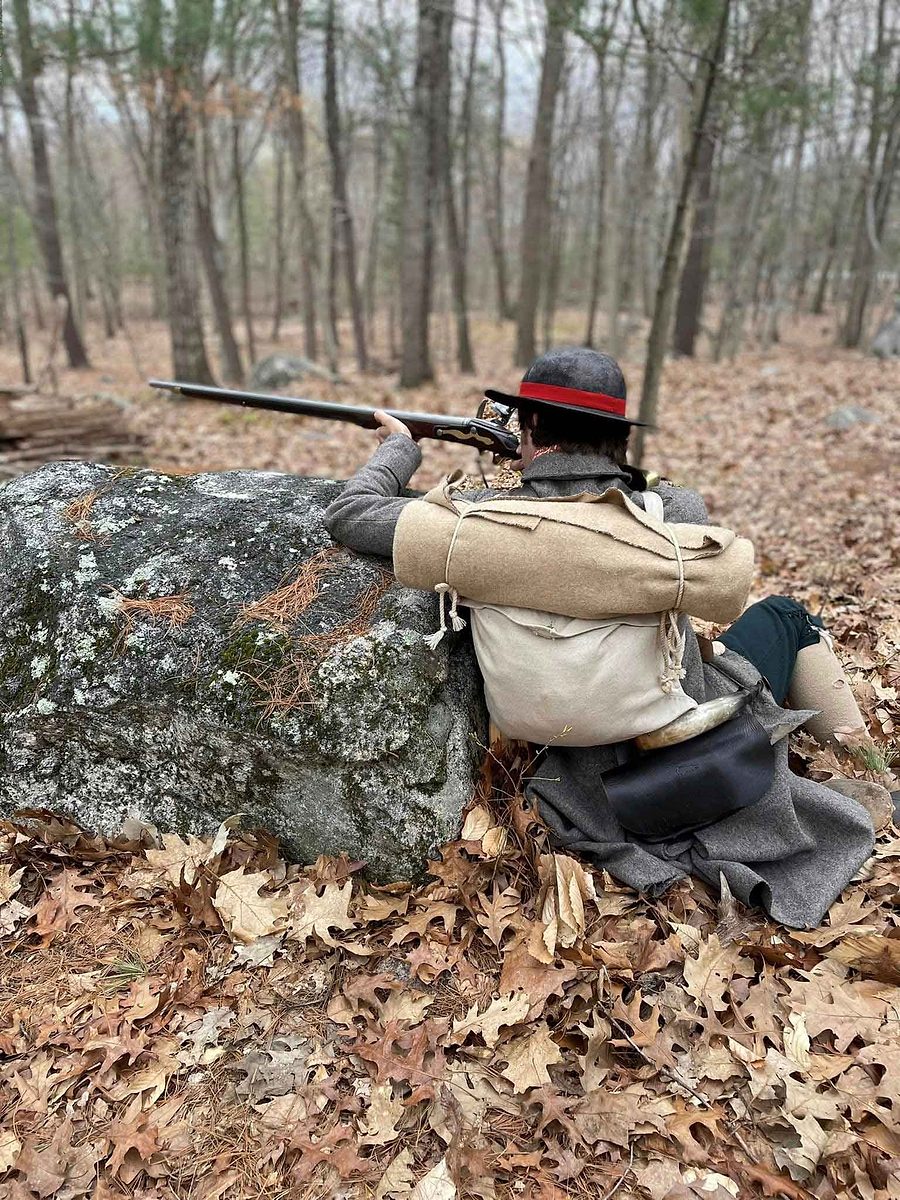Objects can sometimes carry meanings beyond their original purpose. For Ezekiel Davis of Acton, a peculiar hole in his old hat told a very big story!
In 1775, Ezekiel Davis was 21 years old. He and his older brother Isaac volunteered to serve in the town of Acton’s newly raised minute man company. Isaac was chosen and commissioned as the company’s captain. On April 19, 1775, the company marched to Concord and fought at the North Bridge. Two members of the company were killed by British musket fire, including Ezekiel’s older brother, Captain Isaac Davis.
Ezekiel himself had a very close call! A ball passed through his hat and grazed his head. Following the North Bridge fight, Ezekiel and the rest of the Acton minute company pursued the British soldiers back towards Boston. Ezekiel was paid for 16 days in camp. He then enlisted in Captain William Smith’s company of Col. John Nixon’s Regiment (5th Massachusetts). On June 17 the company was engaged in the Battle of Bunker/Breeds Hill.
Sometime after the battle, Ezekiel returned home to recuperate from an illness. He then returned to his regiment’s encampment on the fortified Winter Hill in Charlestown, where he remained until the end of the year when his enlistment was up.
Ezekiel was called up again on March 4, 1776. General Washington fortified Dorchester Heights, and a general action was expected. However, the British did not attack, and the militia were sent home after a few days.
Ezekiel’s next term of service was quite memorable. On September 22, 1777, the Massachusetts General Court called for “at the least one half of all the Able bodied militia officers, non commissioned officers & soldiers in the Counties of Berkshire, Hampshire, Worcester, & Middlesex & the third and fourth Regiments of the County of Essex”. The men were to join the Northern Army under General Gates. Ezekiel Davis served in Col. John Buttrick’s company (not a typo), Colonel Reed’s Regiment. They were present at the surrender of General John Burgoyne’s army and helped escort prisoners to Winter Hill in Charlestown, MA. He served for one month and 11 days.

The North Bridge, Concord, MA
Ezekiel died in 1820. His widow, Susannah, applied for his pension in 1837. Susanna began her testimony by stating that her husband “was at the Concord Battle on the 19th day of April 1775 at which time…my said Husband had a ball shot through his hat…” She went on to say that after his enlistment at Boston had ended, “he wore home the same hat…that was shot through at Concord.” She also remembered that “he kept the same hat for a number of years after we married, I well recolect… I went to Boston with my Husband and on our way he showed me the place where he stood when the ball was shot through his hat…” Another friend, testifying on Susanna’s behalf, remembered that her late husband, who had died during the war, spoke of Ezekiel and how he was “proud of wearing the same hat he had shot through at Concord…” She herself visited camp to pick up her husband’s effects after he died and met with Ezekiel. Even in that sad moment, he spoke to her “about his hat and showed me how that ball went through it…” Other veterans recounted similar anecdotes. It seems that in the mind of those who knew him, the memory of Ezekiel Davis was forever linked with that of his battle-scarred hat.
Reprinted with permission from Minute Man National Historical Park.
Sources
NARA Record group 15, NARA M804. Revolutionary War Pension and Bounty-Land Warrant Application Files. Roll: 0752 National Archives NextGen Catalog
Resolves of the General Court #307 22 September, 1777 – Resolve Providing for a Reinforcement to the Northern Army.
Acts and resolves passed by the General Court : Massachusetts : Free Download, Borrow, and Streaming : Internet Archive
Massachusetts Soldiers and Sailors of the Revolutionary War, Volume 4. page 488 ocm12601336-1898-v.4.pdf
Abbass, D.K. Ph.D “Butts Hill Fort, Portsmouth” Butts Hill Fort, Portsmouth | Rhode Tour
Frothingham, Richard. “History of the siege of Boston, and of the battles of Lexington, Concord, and Bunker Hill. Also an account of the Bunker hill monument, With illustrative documents” Boston, Little, Brown, & co, 1873. Pdf. Retrieved from the Library of Congress, <www.loc.gov/item/02004522/>.


